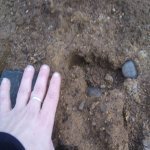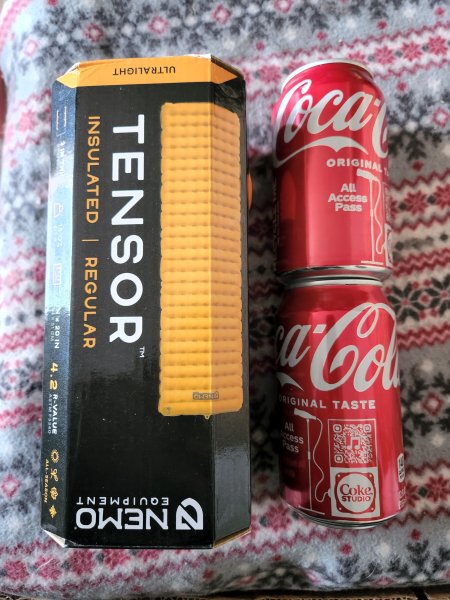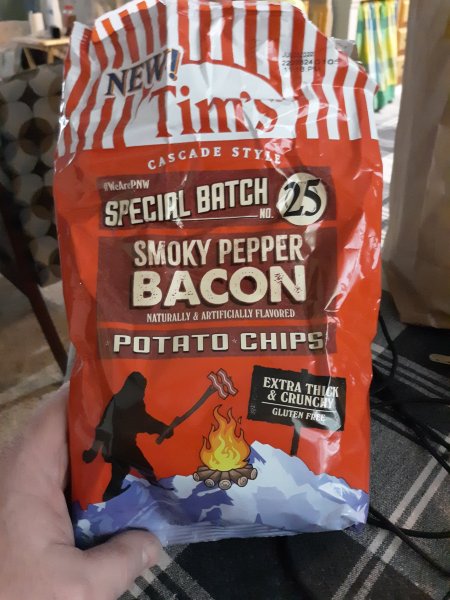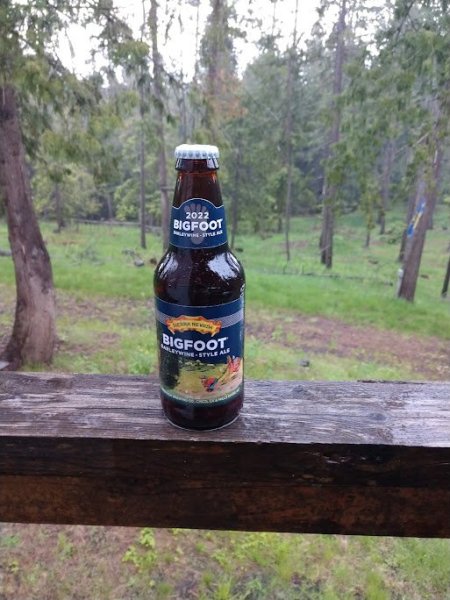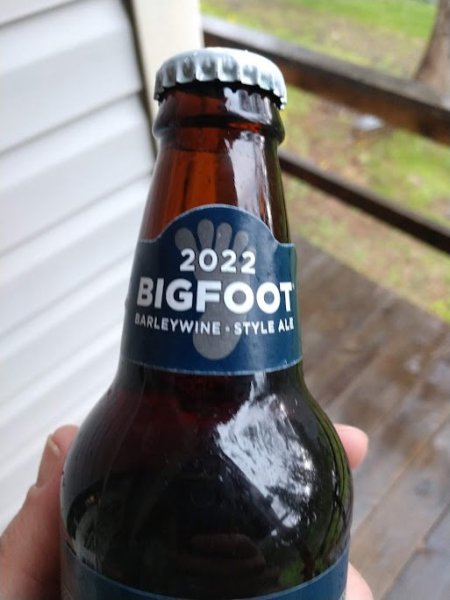Leaderboard
Popular Content
Showing content with the highest reputation on 05/31/2022 in all areas
-
2 points
-
Just bought the Nemo Tensor regular sleeping pad. 3 inches thick 15 ounces 72 x 20 inches 4.2 R value. Waffle face instead of channels, like my Big Agnes pad and I LOVE it. Such an improvement. About $200 and I'm thinking a better night's sleep is worth every penny. Of course, now I don't know if I'll be able to hike and camp thus summer, but it'll be light in the pack when I do! It'll do great on a camp cot while car camping, too2 points
-
Boys and Girls, here's first dibs on the soon to be released 'lite' version of the Nest Area analysis that i finished for 2021. This report prior to today, has only been viewed internally by Olympic Project members and a very selective few others. As mentioned, it's the 'lite' version that i just wanted to release due to time restrictions and going forward, i need to analyze both weather conditions and moon phase correlations among other things, when time is a little easier to come by for me. Anyway, it's important to me that BFF members get a first look at it and i hope this thread can ignite productive conversation among us. It's important to note that all Bird and Mammal recordings analyzed were clarified by multiple people using the MaCaulay Library of Sound. As and when i make edits due to people pointing out grammatical errors etc, i'll update the report and post the most recent edit here as we go along. The recording project is continuing and recording as i write and i can tell you that 2022 and the first Winter that has been recorded so far, has been extremely productive and Winter was the season that was most interesting to us due to the timing of both the original Nests found (February) and the 2020 new 'under construction' Nest find (February). If anybody has any questions at all on anything, please add to the thread and i'll try my best to answer them, checking in to the thread on a minimum of every Monday and Tuesday at least. I'd be really interested on peoples thoughts and/or experiences of the possible Coyote Warning/Locator call correlations that were found. Sharing is caring, enjoy ! Edit : If anyone wants this on PDF, just message me your email address and i'll send it across soonest.1 point
-
1 point
-
1 point
-
1 point
-
1 point
-
Hey Tony, i asked Chris to send across one of the Coyote Warning/Locator calls and he just has. Here's what he wrote too about it too : 'This is the call, single coyote, howl screaming, howl barking, very rarely another will chime in and do it too. I think I have one example of that somewhere but it doesn't happen very often and I'm just assuming it's the alpha's mate when that happens. 99.9% of the time this is it. It can go on and on and on but this clip is typical. Chris' April 25 NA1 Coyote Warning howl scream howl bark 1251am 2022.mp31 point
-
Hi Tony, hope all is well ? I've answered above within your post, in bold . BobbyO, Thanks much for your reply and all your comments to my questions. On the coyote sounds, I am very interested in what these warning/locator calls sound like, so that when I go to the field I can identify them. In researching the internet for coyote sounds, I found the followings 3 sites (shared below for whoever is interested). https://pickhunting.com/what-does-a-coyote-sound-like/ This website lists 11 types of coyote sounds and has sound clips of many of them (but not all). Quoting from this site: "According to studies, a coyote can make eleven different types of sounds. All these sound patterns have different intensity, loudness, and frequencies." Woof: Woof calls are made by parent animals especially when they want to push their cubs in a hidden place or den. These sounds are usually low-pitch alarms in case of impending dangers or predators. Adult dogs often utter woof like vocals close to the den or bedding areas of pups. It sounds like. Wooo….ooo. Growl: Growls are low warning sounds but with high pitch which means don’t come closer. Such sounds can be heard when puppies fight each other during mating. These are in fact warning signals from coyotes to another coyote. Sometimes growling accompanies barking if danger is not so far. It seems as these vocals are uttered from the deep throat as Oo…OO..oooooo Huff: Huff calls are also high pitch warning vocals. These sounds are produced both from nostrils and mouth. Animals push air forcefully out through the nose to produce such sounds. So, these are less like sound and more pressure of air from noise. These calls mean to stop unwanted advances of a fellow coyote or even other animals. Bark: Barking sounds of a coyote resemble a dog. Such sounds are most common and it is difficult to identify between dog bark and coyote bark. They bark for several reasons. Mostly they do so while talking to other fellows. In case of danger and unwanted advance, they also bark in a loud pitch long-note voice. This barking sounds like.OO…Hoo.HooooooooooOo Yelp: Yelp sounds are expressive and made in excitement. Young ones make yelp noises while playing with others. These vocals are high intensity but short note sounds. Such sounds mean we are happy. Whine: Whines are expressive notes in case of distress, pain or hunger. During delivery, female coyotes whine with pain. Young ones whine in low pitch during hunger. High Pitch Whines: High pitch whines are agonistic sounds produced by leading animals. They show submission to subordinates. Bark howls: Bark howls are sounds in which coyotes bark and howl simultaneously. These sounds are meant for alarming signals and showing dominance over territory. Low pitch whines: Low-frequency whines include physical gestures also like tail wagging and muzzle nibling. These sounds are heard to attract the opposite sex in the mating season. Group collective howl: Group collective howls are multiple sounds at the same time. These are like greeting dog songs like Wooo….wo..ooo…wo.It seems as if a coyote pack is planning a party. Lost lone call: This call is extremely disturbing produced by infants when they lose parents. Pups make lost lonely call noise to call mothers or to tell them they are hungry. However, the author of that website did not identify the type of sounds corresponding to warning/locator call. Maybe the bark howls listed above is the alarm signal corresponding to warning/locator call? https://www.farmanddairy.com/columns/how-to-understand-coyote-vocalizations/375232.html This other website list 10 types of coyote sounds. The list is similar but not identical to the one above but does not have sample sound clips. However, after going thru the descriptions below, it is not clear where a warning/locator call will fall. Maybe a bark-howl per description below on threats? Types of Coyote Vocalizations: 1. Growl. This vocalization holds no mystery. A growl is used as a threat, specifically for something within close range. 2. Huff. This is the expulsion of air through the nose and mouth, and is also used as a high-intensity threat in close proximity. Huffs are used when there’s bickering over carrion. 3. Woof. This vocalization is made as both a low-intensity threat and as an alarm. It’s a sound made when a coyote is startled and unsure of exactly what is happening. 4. Bark. The bark is a long-distance threat or alert of low to medium intensity. 5. Bark-howl. This is when the coyote gets serious about a threat. The bark-howl is used as a long-distance high-intensity threat or alarm. It starts with a bark and blends into a howl. What is interesting about the bark and the bark-howl is that research suggests that the varying intensity and frequency of barks could contain different information. Howls stably convey information for distances of at least one kilometer. Barks, on the other hand, rapidly attenuated and did not appear suitable for transmitting information. 6. Whine. This sound is used to express submission and is usually given by a subordinate coyote to a more dominant coyote. 7. Yelp. The yelp takes the whine up a notch and represents high-intensity submission. However, it can also be a response to being startled. As is the case with several other of these vocalizations, this categorization shows that coyote communication is more of a gradient. 8. Woo-oo-wow. This is the greeting song of coyotes, and is used during high-intensity greeting displays. The vocalization modulates in frequency and amplitude as a coyote’s motivation shifts. 9. Lone Howl. The lone howl is just what you probably already know it to be: a howl by a single coyote, which is often started with a series of barks and can distinguish individuals. 10. Group Howl. A group howl is sent up when two or more coyotes come together after being apart, or it could be given as a response to the howls of distant coyotes as a way of giving out location information to any listeners. This 3rd link is a library of coyote sounds with 31 samples but unfortunately, the author does not divide them into the 10 or 11 types listed above. These sound clips include several coyote locator calls but they sound like a group collective howls. Not sure if the definition used in the Olympic nest study is the same as this library. https://www.101soundboards.com/boards/28565-coyote-calls I will pay more attention to coyote sounds and vocalizations next time I am out in the field to see if I can identify these different types of sounds.1 point
-
Here it is.. https://www.youtube.com/watch?v=6DSKrJaARs0&t=37s1 point
-
Here's an old thread with some interesting info: https://bigfootforums.com/topic/844-how-do-other-animals-react/#comment-11670 Also suggest forums search by author Branco for coyotes. He shared a lot of knowledge over the years about their relations w/ the hairy folks. I'm sure many others have as well.1 point
This leaderboard is set to New York/GMT-05:00



